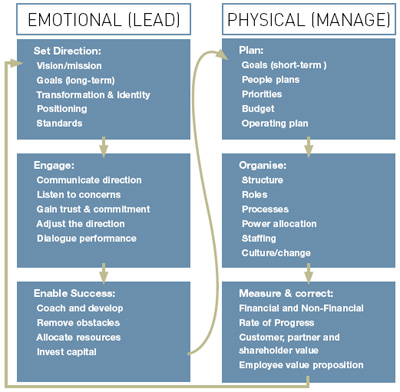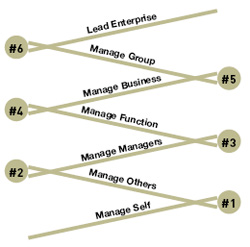|
MARCH 2007 |
 |
|
 |
| Home | | |
Message from CE | | |
Cover story | | |
Strategy in action | | |
Major projects | | |
Operations | | |
Acquisition & disposal | | |
| |
| Currently viewing: Strategy in action / Next: Major projects |
Strategy in action
LEADERS OF THE FUTURE
In the first of a series of articles, Andrew Skudder outlines the Murray & Roberts strategy to develop leaders of the future
For South Africa, the 2010 Soccer World Cup coincides with a global trend of increased investment in infrastructure – a trend that many analysts predict as being the most dramatic increase in construction activity in our country’s history. Following more than two decades of decline, this will raise the profile of the engineering and construction industry and drive demand for human capital and leadership talent.
Murray & Roberts views its leadership teams as a key source of competitive advantage and has implemented a strategy to uncover fresh solutions to prepare them for a period of sustainable growth.

WHAT IS LEADERSHIP?
The topic of leadership has been written about and debated in numerous business journals and books and although there is no single definition, it is generally accepted that leadership is as much an art as a science. Perhaps the best way to explain the concept of leadership is to consider the expected outcomes of good leaders. In his book Leadership is an Art, Max du Preez writes that “the signs of outstanding leadership appear primarily among the followers. Are the followers reaching their potential? Are they learning? Serving? Do they achieve the required results? Do they change with grace? Manage conflict?”
So what do good leaders do to achieve these kinds of outcomes? As depicted alongside, good leaders demonstrate the ability to manage and lead. Good management on the other hand, requires the ability to plan, developing short-term goals and operating plans, the ability to organise, structuring an organisation and clearly defining roles, and the ability to measure and correct the activities of an organisation and its team members.
What strong leaders do
THE LEADERSHIP PIPELINE
It is within this context that Murray & Roberts is implementing the Leadership Pipeline model and global performance standards as an accountability anchor to align and legitimise leadership development and succession across the Group. The Leadership Pipeline and performance standards clarify individual expectations and accountability to direct individual performance which in turn drives business results.
The basic idea behind the Leadership Pipeline is that different layers in the organisation are accountable for different results. These results change dramatically as you move from layer to layer, requiring new skills, using your time differently and valuing doing different and new work to achieve
the results.
The Leadership Pipeline & Results
 |
|
The different requirements of success at each layer are expressed as performance standards, which articulate what is expected against a set of performance dimensions, reflecting what strong leaders do. Murray & Roberts has developed specific performance dimensions that convey leadership expectations and requirements. Leadership is multi-dimensional and the Leadership Pipeline aligned performance standards are designed to cover a complete set of requirements for sustaining long-term success.
Murray & Roberts aims to deliver the leadership capacity the Group requires to achieve its growth and succession objectives through the introduction of a comprehensive leadership development framework based on the Leadership Pipeline model.
THE DAVOS VIEW Millard Arnold reports on the global views on leadership that emerged from Davos In a world caught in the throes of transition – a shift from the power equations of the old to a more fluid, dynamic future – the issue of leadership remains a constant. This was more than apparent at the recently concluded annual meeting of the World Economic Forum where participants grappled with the increasing complexity of leadership. For many, the basic issues remain: what skills do people need for the future and how can they be delivered? There was a consensus that traditional curriculums and educational processes are inadequate in developing and developed countries alike, that business schools are not turning out people with the requisite interpersonal and cross-cultural skills (including appreciation of cultural differences), and that collaboration between government, business and education needs to be improved. What has changed in the past decade is the emergence of instantaneous global communications and the need for instantaneous decisions. The demand for 24/7, 365-day leadership has introduced a huge degree of stress. Despite the pressure, leadership continues to be about setting the tone, setting the agenda and choosing the right people. Having bright ideas and serving as a reference point are not necessarily a definition of leadership. MILLARD ARNOLD IS AN EXECUTIVE DIRECTOR OF MURRAY & ROBERTS LIMITED. |

